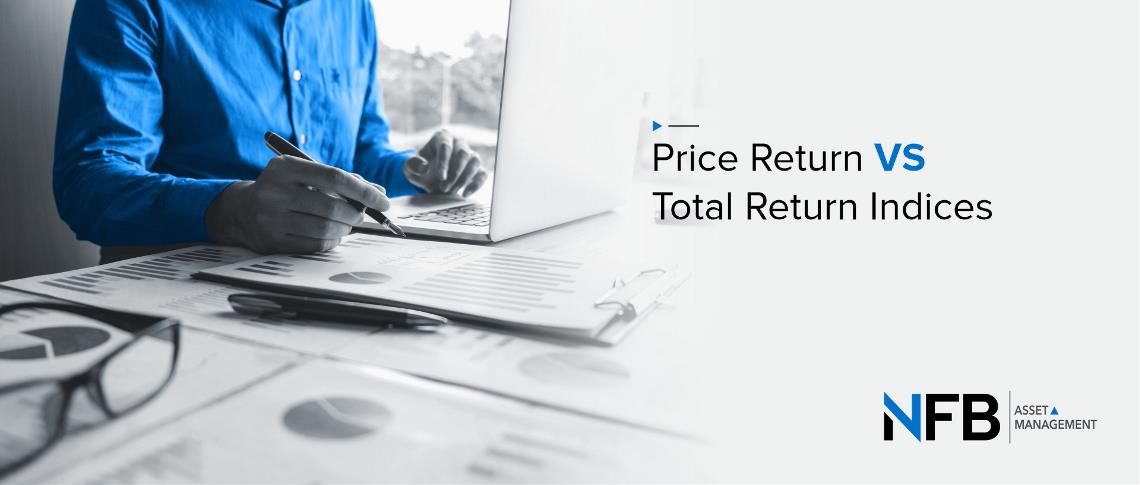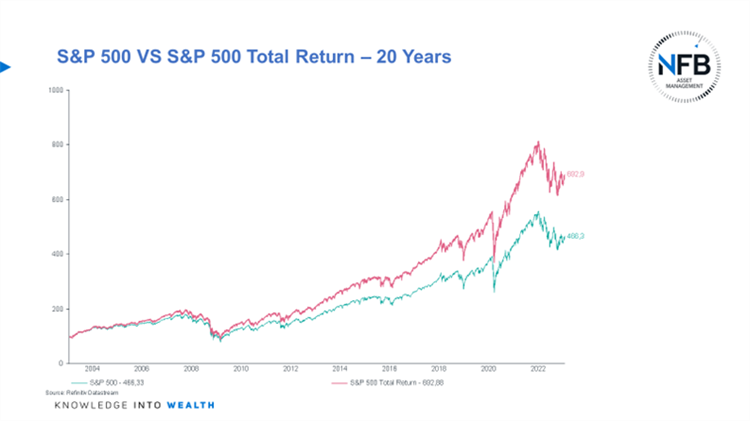

The two indices reflect two different methods of return calculation. The Price Return Index tracks Capital Appreciation, the increase in the share price of all the underlying shares and, while very useful for valuations, isn’t the complete picture for the investor as it leaves out a significant portion of the returns in the form of reinvested dividends. The Total Return Index, however, tracks both capital appreciation and dividends.
The below table shows the annualised returns for given periods of time generated by each index. The Total Return index outperforms the Price Index over every period as the reinvested dividends are included and compounded over time. For example, over five years, a medium-term investment being between 5 and 10 years, the outperformance of the Total Return Index is 2.62% per annum.
| Annualised Returns* | S&P 500 | S&P 500 TR |
|---|---|---|
| 1 year | -20.27% | -18.95% |
| 3 years | 5.79% | 7.75% |
| 5 years | 8.37% | 10.99% |
| 10 years | 16.15% | 21.71% |
| 20 years | 16.73% | 27.29% |
So, what does this mean? Inappropriate benchmarking is a big one. When the benchmark is a price return index, it doesn’t reflect all the dividends the shares held have paid, leaving out a significant portion of the returns the investor has made. This means that an Equity Fund, compared to a benchmark that ignores dividends, may reflect an outperformance that will only get more significant over time. This may very well also be the same outperformance that is used in a performance fee calculation. The below graph depicts the long-term Price Return (Green), and Total Return (Pink) of the S&P 500 index rebased to 100.

However, this does not mean there is no need to pay attention to which index is used over the short term. For example, in 2022, the JSE, on a price basis, made a loss of -0.91%, while on a total return basis, the JSE was up 3.56%. When reviewing the year-end data for the end of 2022, the index to pay attention to would depend on your investment style. If you reinvest all your dividends, it would be best to compare your returns to a Total Return index. This is not only because it is a more apt comparison but also because the option of an ETF which tracks the index will likely exist and may be a better option if your Total Return on your Equity Fund is not truly beating the Index's Total Return. An ETF would allow you to get the index’s total return and likely reduce the fees paid. However, if you take dividends as income and want to track how your capital appreciation stacks up against the market, then a price index would be a better comparison.
*The Returns are calculated as at the end of 2022













